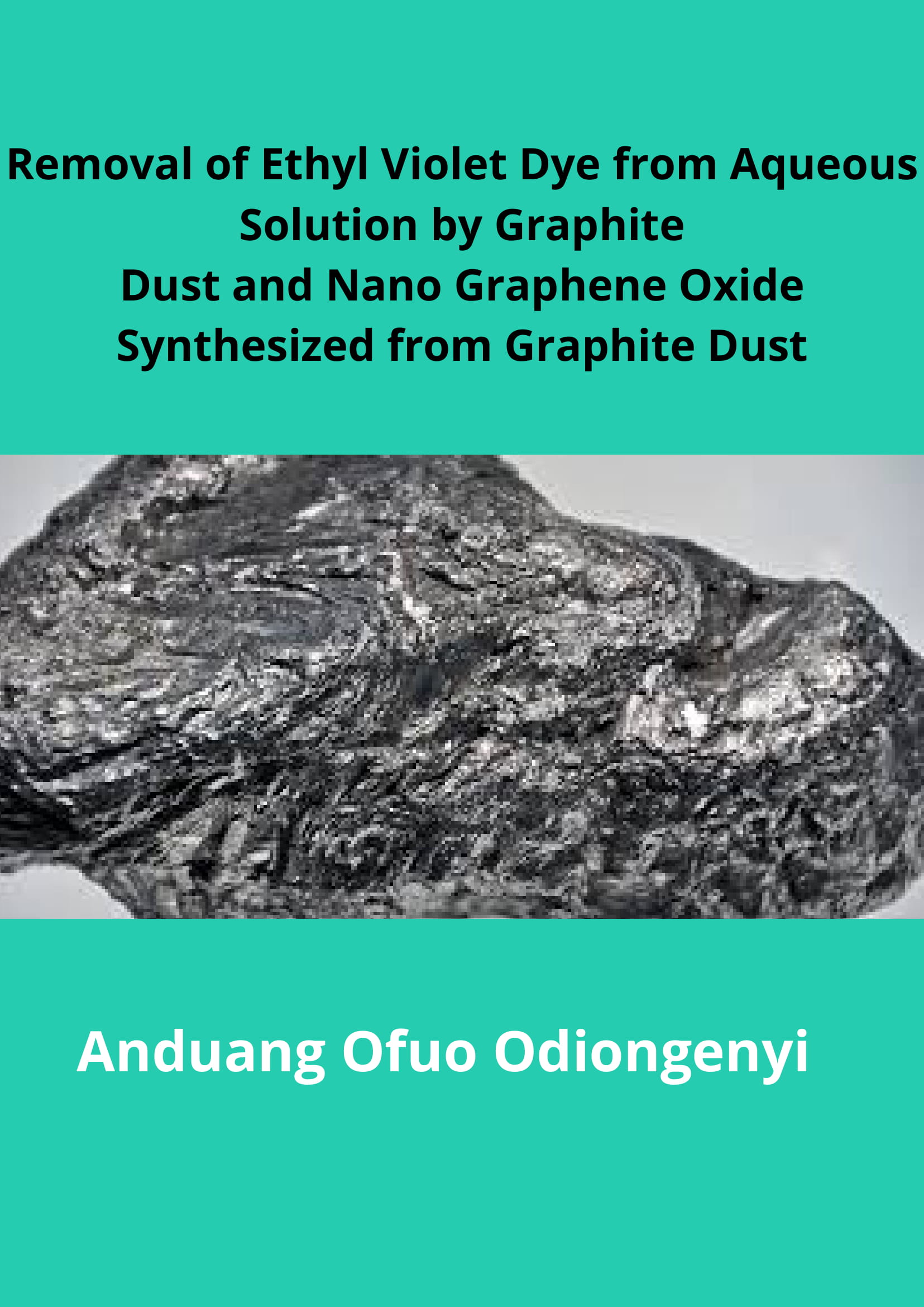Removal of Ethyl Violet Dye from Aqueous Solution by Graphite Dust and Nano Graphene Oxide Synthesized from Graphite Dust
Keywords:
Decontamination, colour, adsorption, graphite dust, nano graphene oxideAbstract
Communication in Physical Sciences 2019. 4(2): 103-109
Author: Anduang Ofuo Odiongenyi
Nano graphene oxide was synthesized from graphite dust using Hummer’s method. The graphite dust and the synthesized nano graphene oxide were used as an adsorbent to remove ethyl violet dye from aqueous solution. The equilibrium amount of dye adsorbed by graphite dust at 303, 313, 323 and 333 K ranged from 5.303 to 37.236, 1.551 to 22.779, 1.058 to 26.026 and from 1.298 to 22.849 mg/g respectively. For nano graphene dust, the equilibrium amount ranged from 1.904 to 41.467, 1.834 to 55.712, 1.058 to 26.023 and from 1.298 to 22.849 mg/g at 303, 313, 323 and 333 K respectively. Nano graphene oxide exhibited better performance than graphite dust except at 333 K. The adsorption of ethyl violet occurred through a physical adsorption mechanism at 303 K but at higher temperature, chemisorption dominated, Langmuir isotherm best described the adsorption of the dye. The theoretical adsorption capacity of the
adsorbent increased with temperature. Nano graphene oxide displayed better surface modification properties than graphite dust.

Downloads
Published
Issue
Section
Most read articles by the same author(s)
- Anduang Ofuo Odiongenyi, Influence of Sol Gel Conversion on the Adsorption Capacity of Crab Shell for the Removal of Crystal Violet from Aqueous Solution , Communication In Physical Sciences: Vol. 8 No. 1 (2022): VOLUME 8 ISSUE 1
- Anduang Ofuo Odiongenyi, Adsorption Efficiency of Scotch Bonnet Shells as a Precursor for Calcium Oxide Nanoparticles and an Adsorbent for the Removal of Amoxicillin from Aqueous Solution , Communication In Physical Sciences: Vol. 9 No. 3 (2023): VOLUME 9 ISSUE 3
Similar Articles
- Felicia Uchechukwu Okwunodulu, Stevens Azubuike Odoemelam, Comparative Studies On Infrared Analysis of Some Waste Biomass in Heavy Metals Adsorption , Communication In Physical Sciences: Vol. 8 No. 4 (2022): VOLUME 8 ISSUE 4
- N. B. Essien, Sorghum Waste as an Efficient Adsorbent for the Removal of Zn2+and Cu2+ from Aqueous Medium , Communication In Physical Sciences: Vol. 5 No. 2 (2020): VOLUME 5 ISSUE 2
- S. A. Odoemelam, Investigation of Adsorption of Tetraoxosulphate (I) ions by Some Agricultural Soils in Akwa Ibom State, South-South igeria , Communication In Physical Sciences: Vol. 5 No. 2 (2020): VOLUME 5 ISSUE 2
- Comfort M. Ngwu, Okoche K. Amadi, Augustine C. Egwu, Sorption Studies on the Removal of Industrial Dye Aniline Yellow From Aqueous Solution Using Surfactant Modified Iron Filings , Communication In Physical Sciences: Vol. 6 No. 1 (2020): VOLUME 6 ISSUE 1
- Gideon Wyasu, Production of Activated carbon derived from Banana peel for the removal of Cd2+ and Cr6+ in Brewery wastewater , Communication In Physical Sciences: Vol. 3 No. 1 (2018): VOLUME 3 ISSUE 1
- Anduang Ofuo Odiongenyi, Influence of Sol Gel Conversion on the Adsorption Capacity of Crab Shell for the Removal of Crystal Violet from Aqueous Solution , Communication In Physical Sciences: Vol. 8 No. 1 (2022): VOLUME 8 ISSUE 1
- F. E. Awe, Adsorptive studies of the inhibitive properties of ethanolic extracts of Parinari polyandra on Mild steel in acidic media , Communication In Physical Sciences: Vol. 4 No. 1 (2019): VOLUME 4 ISSUE 1
- Runde Musa, Uzairu Muhammad Sada, Nickel-doped Zeolite cluster as adsorbent material for the adsorption of biodiesel oxidation products: Approach from computational study , Communication In Physical Sciences: Vol. 12 No. 1 (2024): VOLUME 12 ISSUE 1
- Okoche Kelvin Amadi, Onyinyechi Uloma Akoh, Godson Chukwudi Eric, Adsorption Studies on the Inhibitive Properties of Aqueous Extracts of Theobroma cacao (TC) Leaves on Mild Steel in 1.0 M HCl , Communication In Physical Sciences: Vol. 9 No. 3 (2023): VOLUME 9 ISSUE 3
- Nathaniel Atamas Bahago, Gideon Wyasu, Sorption Studies of Methylene Blue Using Activated Carbon Produced from Rice Husk , Communication In Physical Sciences: Vol. 3 No. 1 (2018): VOLUME 3 ISSUE 1
You may also start an advanced similarity search for this article.



